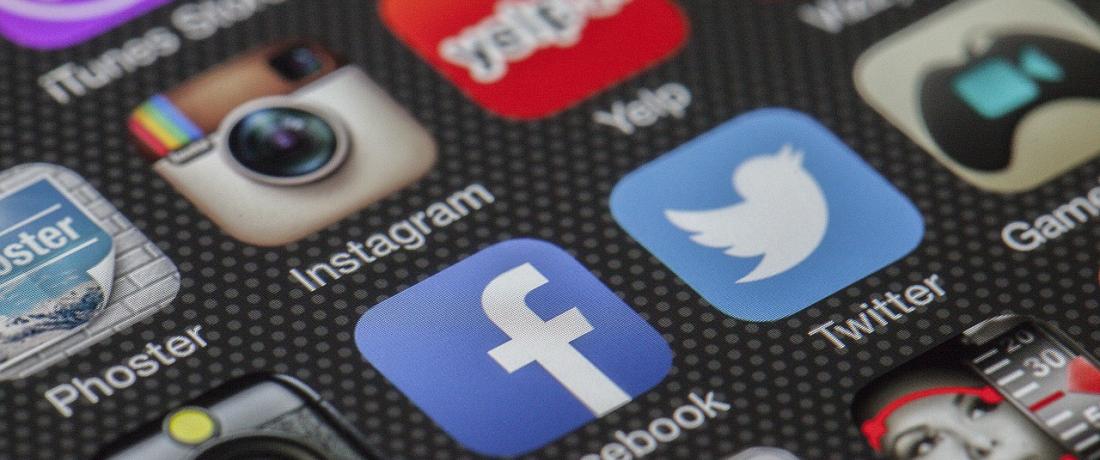
Everybody keeps talking about social media success stories. Well, if other brands make fortunes on likes, shares and comments, so can you. Right? The recipe seems obvious: simply create accounts in all social media, add some nice pictures – and there you have it. Sorry to disappoint you, but that won’t work. Social media channels are different in both aim and content. Each one sends its own kind of message. A strong marketing strategy requires utilizing those that fit a particular business. Therefore, let’s take a closer look at each of most popular social networks, so that you could boost your brand by making the right choice.
This place is opt for sharing photos, news and offers with your fanbase. Use Facebook to tell (prospective) customers what’s going on with your company. Since the network is open for discussion, it might be a great platform to come into notice through starting a humorous or thought-provoking campaign. However, you should keep in mind that many people go to Facebook for personal communication, so don’t make your page solely about sales.
Marketing Tips:
- post things that call to engagement: the more users are clicking, liking and sharing, the more frequently you will pop up in people’s timelines;
- make the most of Facebook Ads – they help targeting prospects who are really interested in your products and services;
- add a Facebook icon onto the corporate website and post a link to your page wherever possible.
The fast-paced version of Facebook allows brands to spread concise pieces of information (up to 280 characters – the limit has recently been doubled). Twitter is perfect for “live” news, quick thoughts, viral jokes and intriguing hooks aimed at driving users to your landing pages. As people are usually scrolling through tweets speedily, you have to be very inventive to draw their attention. Marketing Tips:
- the platform natively supports photos, polls, gifs and even short videos – use these to stand out from the crowd;
- try to reach a wider audience via hashtagging.
Do not sign up to this tricky channel if you have no great photos to share concerning your business. On Pinterest, you can only post clickable images with short captions, which are called pins. The platform is very popular among tangible brands, such as retail shops, restaurants, photography studios, ecommerce websites, etc. As images pinned by highly followed members may come up to millions of viewers, the competition is more than intense. Marketing Tips:
- link each photo to a related page on your site;
- divide your Pinterest into boards with categories covering different aspects of your business to simplify the search;
- take care of keyword optimization of your captions;
- in case your brand is not image-heavy, you can still gather attention through step-by-step guides or “how-to” checklists paired with cool pictures.
This fast-growing network is pretty much like Pinterest. However, Instagram makes photo-sharing more human. It enables users to tell stories, apply filters and get approval. While Facebook tolerates both positive and negative reactions (within the law), Instagram muzzles haters. For that reason, most comments are all about “awwws” and “wows”. Utilize Instagram to post high-quality shots of your products, including those taken by your clients in the wild. Marketing Tips:
- add hashtags, which are popular among your followers, competitors and industry leaders;
- on Instagram, photos cannot be provided with any clickable links – that’s why you should set a shoppable gallery, or there will be no sales ;
- don’t forget about quizzes and contests – Instagram users love live interactions with brands.
And now it gets serious… Designed for businesses and professionals, LinkedIn is the most “formal” social media channels presented in our list. Here people highlight their job experience and expert opinions. Therefore, LinkedIn might be a powerful tool for driving traffic, recruiting and positioning yourself as a thought leader. Marketing Tips:
- fill your brand’s profile with all the required information;
- make sure your list of connections doesn’t include people who are not related to your industry: a plumber in contacts won’t add to a beauty shop’s respectability;
- endorse other peoples’ skills to receive endorsements from them;
- since LinkedIn pages offer a lot less direct conversation, it is vital to join professional groups where you can ask questions, showcase your expertise and meet industry leaders;
- remember: none of those will help, if your team doesn’t start sharing your content.
YouTube
World’s leading video platform can lift your brand awareness. It gives you a powerful advantage because videos are a lot more engaging than textual content. Moreover, they can boost your rankings since YouTube belongs to the almighty Google. So feel free to upload ads and webinars, create playlists and start discussions. Marketing Tips:
- pay attention to the purpose and value of what you are sharing;
- upload only crisp, clear and high-quality videos.
Google+
It might not be the most popular social network, but you shouldn’t ignore its facilities. Google+ is vital for getting found in the web. The platform allows you to post updates, share YouTube videos and create “circles” – segmented lists of contacts. You can choose content for each category, which is a truly unique feature. Marketing Tips:
- make your profile open for search;
- share updates directly to the company’s page;
- personalize your content using circles.
Summary Now that you are aware of the peculiarities of top social media platforms, it won’t be that hard to pick the best options for your business. But here’s another thing you should know. Whatever channel you choose, it will be effective, only if you take social media marketing seriously, which means you are ought to UPDATE, REPLY, THANK and TAG. Constantly. Don’t have time for that? Well, we do. So keep calm and call The Loupe.